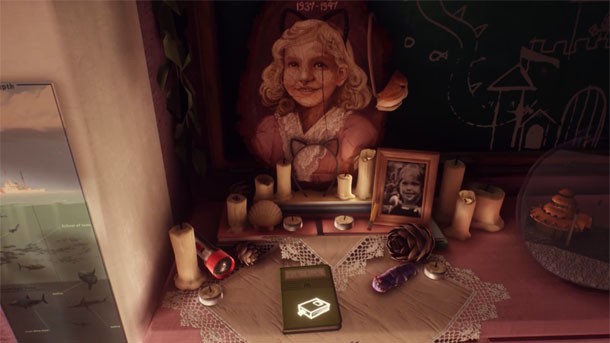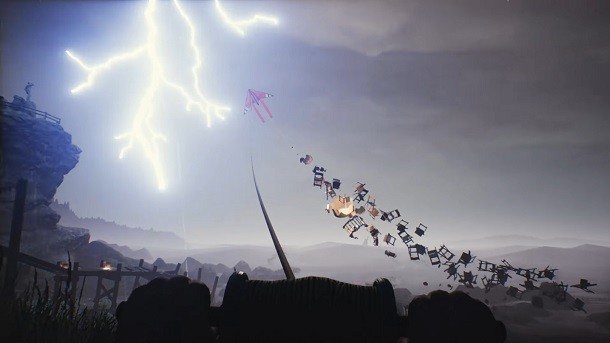Our extra-large special edition is here. Subscribe today and receive the 25% longer issue at no extra cost!
The Virtual Life – Taking On Death In What Remains Of Edith Finch

One of the hardest truths of life is that dying is inevitable. I’ve touched on how video games handle death before in the first installment of The Virtual Life over a year ago. However, What Remains of Edith Finch from developer Giant Sparrow fixates on death so firmly that I thought it would be worthwhile to touch on the game’s unique approach to the subject.
Just a warning: from this point on, I’m talking full-on spoilers for this narrative-driven game. If you haven’t played What Remains of Edith Finch yet, I urge you to close this browser, purchase the game, and play it for yourself before returning because I’d hate to spoil something as fantastic as this.
What Remains of Edith Finch is dedicated to exploring death, not just as a terrible looming thing that will swallow you in time, but also as something we see happen to other people and how that affects us psychologically. Finch also takes care to try and present Death in as many ways as possible: classically somber, darkly humorous, and even as a roaring escape from the tortures of our crumbling mental states.
It does this through an interactive short story anthology thematically built around the classic idea of a family tree. The titular Edith Finch is a young woman returning to the Finch estate for the first time in 11 years. From the get go, Edith tells us about her relatives’ deaths and how she’s convinced there’s a curse that hangs over the Finch family that has caused her relatives to die in strange and horrific ways for generations. The origins of that curse are never made clear, for better or worse.
Family curses are a classic literary trope. They’re in the works of Faulkner and Marquez and countless others, so the fact that a game is centered on that trope isn’t necessarily interesting itself. However the interactivity of video games and Giant Sparrow’s approach to designing these stories, injecting somber subject matter with the fantastical, makes it unique.

For example, early on you play one of Edith’s ancestors, Molly, who died when she was young. Molly was sent to bed without dinner, so she got hungry and started eating things around her room. Toothpaste. Mistletoe. The works. Suddenly she sees a bird outside of her window, so she opens the window and leaps onto a tree branch, transforming into a cat that chases the bird across a series of tree branches. From there, she shifts into a hawk that chases rabbits, and then a shark that eats seals, and finally a tentacle beast that devours people before Molly finds herself back in her room, waiting for the beast that lurks beneath her bed. How she dies is left up to interpretation, with my hypothesis being the poisoning from the toxicity of the objects she ate before her cat transformation hallucination killed her.
This early story is thematically smart because it tells you the whole overarching story of this collection. Like Molly-Cat chasing the bird through the trees, so death stalks each member of the Finch family, and appropriately enough Edith fills in the family tree in her notebook every time she completes a story. Though Edith could be just another vehicle for all these stories and the game would still be fine, What Remains of Edith Finch is made even more special by the fact that it creates motives for its protagonist and gives her a voice to air out her frustrations and feelings about her family.
Edith is clearly troubled when we meet her. She had a difficult relationship with her mother and grandmother that is slowly doled out over the course of the frame story. Edith is pregnant. She’s worried about the curse, but instead of choosing to live in ignorance and hope for the best, she meets the curse head-on, learning about how her family lived and died so she can take on the future and, in her own way, help her family members strike back at death.

The idea that stories can give people some semblance of immortality has been around for ages. Authors like James Joyce and Oscar Wilde wanted to be great so that their names would ring out throughout history, like Shakespeare’s. On a smaller level, we tell stories about our family members to keep their memories alive, whether it’s about how your grandparents fought wars or how your parents might have met each other at an arcade while playing Ms. Pac-Man. Death gets us in the end, but it doesn’t have to take everything. The storytellers, the people who go after us, can keep the important things alive; that’s what What Remains Of Edith Finch is about. It’s about a person who’s scared of death but who bravely looks it in the face so she can prepare her child to face it as well, while also leaving behind her own story.
That’s not to say that the death or the ending of the game is a happy matter. After all, Edith ostensibly dies during childbirth with a lot of unresolved questions about her mother and her grandmother’s relationship, as well as the nature of the family curse. However, one of the last things we hear Edith say is, “If we lived forever, I think maybe we’d understand things. But as it is, I think the best we can try to do is open our eyes and appreciate how strange and brief all of this is.” It’s a bittersweet sentiment, and I can't deny feeling a stir of hope as I watched her kid read the words in her notebook: “I don’t want you to be sad that I’m gone. I want you to be amazed that any of us ever had a chance to be here at all.”
As unpleasant and nasty as life can be, it’s hard to deny all the beauty around us and in what we can leave behind. What Remains of Edith Finch does an an impeccable job driving that point home.
You can read Joe Juba’s review for What Remains Of Edith Finch here and watch the opening of the game here.


Get the Game Informer Print Edition!
Explore your favorite games in premium print format, delivered to your door.
- 10 issues per year
- Only $4.80 per issue
- Full digital magazine archive access
- Since 1991








